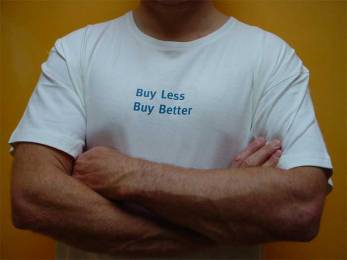
The home, household goods & services
Design trends – the raw deal
I don’t write about design trends very often, partly because other people do it better than I could do. But I have noticed a strong trend towards a rough and ready aesthetic over and above the sleek and the glossy. An example of this is interior design where raw, untamed materials are starting to dominate kitchens, living rooms, bathroom and even bedrooms.
The word raw evokes unprocessed, undiluted, traditional, robust, anti-spin, anti-trend (ironically) and natural. Indeed, it could be linked to the idea of nature deficit disorder – the idea that we have moved too far from the natural world and have become consumed with the idea of short-term style over long-term substance. It may link somewhat with functionality, austerity-chic and eco-luxe (arh!). There is also a real link with the revival of craft, which I believe is a counter trend to digitalisation, virtualisation and even globalisation.
Examples? Think of rough wood, factory packing cases, things that expose the natural beauty and simplicity of materials.
Ref: The Financial Times (UK) How to spend it, 13 March 2010, ‘ Rugged Good Looks’ by N. Swengley. www.ft.com
Links: back to basics, simplicity, authenticity, nature, found objects
Source credibility: *****
Search words: Raw, rough, patina, utility, functionality
A new wave of DIY doings
Doing it yourself used to be the way that most things were done. Then in the 1960s, increasing affluence turned DIY into a hobby for middle-aged men.Not any more. After several decades, DIY has emerged from the doldrums and merged with the craft movement, annexing the “make do and mend” trend along the way. It is difficult to tell just how widespread the new DIY trend is but wikihow, an online how-to manual, claims it received 177 million visits from men and women in 241 countries during 2009.
So what’s behind the trend? Most recently there is the desire to save money (make do and mend), for tactile experiences, and a creative outlet. Other factors are the environment, cheap tools from China, and easy access to free online information. People want to move away from the high street aesthetic where products always look identical. But the main reason is undoubtedly personal satisfaction.
What interests me most though is the way this could connect to the dominance of computers and digital technology in peoples’ lives and the need to escape from the stresses (and connectivity) of daily life. This is echoed by Andrew Keen, author of Cult of the Amateur, who argues that the idolisation of amateurism is bound up with the 1960s counter-cultural revolution and revolt against authority. This is wonderful on one level but there is a danger that the celebration of all things amateur could lead to a dilution of professionalism that will eventually erode quality.
Not everyone will agree with this. Charles Leadbeater, for instance, author of The ProAm Revolution, argues that, while professionals shaped the 20th century, it will be networked amateurs who make the 21st century. Here’s an opportunity: sell mass-produced items (a chassis if you like) to customers who can then personalise or ‘design’ the chassis with a range of similarly mass-produced enhancements. Think of Crocs shoes and the icons kids can buy to jazz them up.
Ref: The Financial Times (UK) 3-4 April 2010, ‘Practical stress relief’, by C. Ferraro. www.ft.com
Links: churchofcraft.org, www.wikihow.com
Source credibility: *****
Search words: DIY, wikihow, make do and mend, digital technology, amateurs, networks
Is 3D TV just a fad?
The idea behind 3D is more than 100 years old, but there has been a recent resurgence of 3D movies and now 3D TV too. Should we expect an invasion of other 3D devices in our homes in the near future? From a manufacturer’s perspective, 3D TV makes sense because production does not require massive new investment. In Japan, 3D TVs are seen as potential saviours of an industry that lost out to South Korean and Chinese makers recently, but the trend may be shortlived.
First, for 3D TVs to be attractive to consumers, there needs to be an ongoing supply of quality 3D content. I’d say this is questionable. Nevertheless, Sony aims to sell as much as one trillion yens’ worth of 3D equipment per year by 2012. This would include 3D TVs and other devices, such as 3D game playing screens and 3D cameras. Personally, 3D feels like a fad with the emphasis placed more on the device than the content itself.
Ref: Nikkei Weekly (Japan) 22 February 2010, ‘3-D TV battle lines drawn’, www.usnikkeiweekly.com
Source credibility: ****
Search words: 3D, 3D TV, content, Sony
